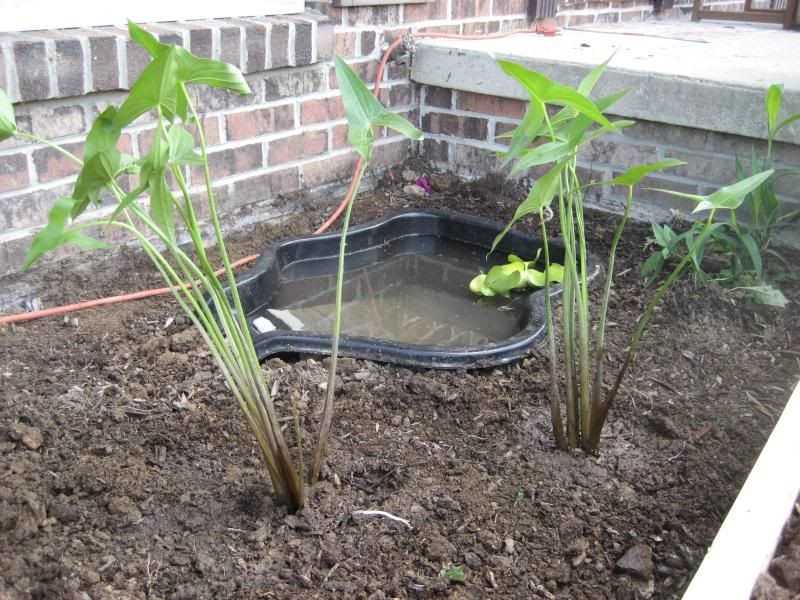
If you’re a proud owner of a red-eared slider, you know how important it is to provide them with a habitat that closely mimics their natural environment. One way to achieve this is by creating an outdoor habitat where they can bask in the sun and enjoy fresh air and natural surroundings. Not only does an outdoor habitat provide numerous health benefits for your red-eared slider, but it also allows them to exhibit their natural behaviors in a more natural setting.
Next, you’ll need to create a suitable environment within the habitat. Start by providing a large and deep pond or pool for your red-eared slider to swim in. Red-eared sliders are semi-aquatic turtles and require plenty of water to thrive. The water should be clean and free of any chemicals or chlorine. Adding live aquatic plants and a filtration system can help maintain the water quality and create a more natural habitat for your slider.
In addition to the water, you’ll also need to provide a basking area for your red-eared slider. This can be done by placing flat rocks or logs in the habitat near the water. The basking area should be large enough for your slider to completely dry off and should be positioned in a way that allows them to easily climb in and out of the water. Make sure the basking area receives direct sunlight for a significant part of the day, as this is essential for your slider’s overall health and well-being.
With careful planning and attention to detail, you can create the perfect outdoor habitat for your red-eared slider. This will not only enhance their quality of life but also provide you with the opportunity to observe and interact with your turtle in a more natural setting. Remember to regularly monitor and maintain the habitat to ensure the health and well-being of your red-eared slider.
Choosing the Ideal Habitat for Your Red Eared Slider
A red-eared slider is a semi-aquatic turtle that requires a carefully designed habitat to thrive. Providing the perfect habitat for your pet is essential for its overall health and well-being. Here are some important factors to consider when choosing the ideal habitat:
1. Tank Size
The size of the tank is crucial for your red-eared slider. It needs enough space to swim and move around comfortably. A general rule of thumb is to provide 10 gallons of water per inch of the turtle’s shell length. For example, if your turtle has a shell length of 4 inches, a 40-gallon tank would be the minimum size. However, larger tanks are always better to allow for more freedom of movement.
2. Material and Design
When selecting a tank, choose one made of glass or acrylic. These materials are sturdy, non-toxic, and easy to clean. Avoid tanks with sharp corners or edges that may pose a risk of injury to your turtle. Also, consider a tank with a sturdy lid to prevent your red-eared slider from escaping and to keep other pets or children from disturbing it.
3. Water Depth
Red-eared sliders require both deep and shallow areas in their habitat. The water depth should be at least twice the turtle’s shell length to provide enough swimming space. Additionally, include a shallow area with a basking spot above the water surface so that your turtle can easily climb in and out of the water.
4. Filtration System
A good filtration system is essential to maintain clean and clear water for your red-eared slider. Invest in a high-quality filter that can handle the size of your tank and adequately remove waste and debris. Regularly clean and maintain the filter to ensure its effectiveness.
5. Temperature Regulation
Red-eared sliders are ectothermic animals, meaning they rely on their environment to regulate their body temperature. Provide a suitable heat source, such as a basking lamp or a UVB bulb, to create a warm basking area where your turtle can comfortably raise its body temperature. The water temperature should be maintained between 75-85°F (24-29°C).
6. UVB Lighting
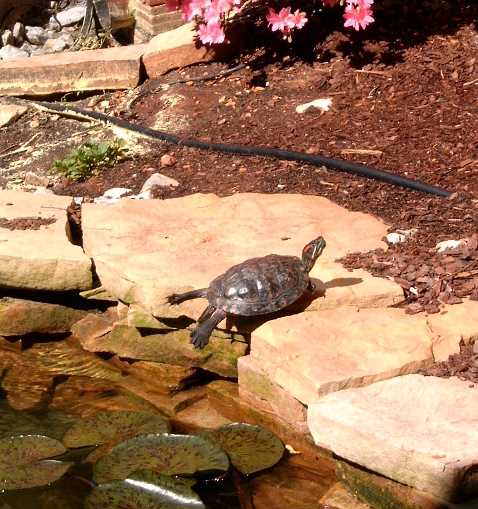
UVB lighting is essential for your red-eared slider’s overall health. It helps them process calcium and produce the necessary Vitamin D3 for strong and healthy shells and bones. Use a UVB bulb specifically designed for reptiles and follow the manufacturer’s instructions for positioning and replacement.
7. Additional Considerations
Other factors to consider when creating the perfect habitat for your red-eared slider include providing suitable hiding spots, such as rocks or artificial caves for your turtle to feel secure, and using a substrate material that is easy to clean and doesn’t pose a risk of ingestion. Remember to regularly monitor and maintain the habitat to ensure it remains clean, safe, and comfortable for your red-eared slider.
| Features to Consider | Recommended | Not Recommended |
|---|---|---|
| Material | Glass, Acrylic | Plastic, Metal |
| Size | Large tank with ample swimming space | Small tank with limited space |
| Temperature | Warm basking area (75-85°F) | Cold, fluctuating temperature |
| Filtration | Effective filter system | No filtration or inefficient filter |
By considering these factors and providing a well-designed habitat, you can ensure that your red-eared slider enjoys a comfortable and healthy living environment.
Setting Up the Tank for Your Red Eared Slider’s Outdoor Habitat
Creating the perfect outdoor habitat for your Red Eared Slider is essential for its overall well-being and health. A well-designed tank will provide an environment that mimics their natural habitat, allowing them to thrive and live a happy life. Here are some steps to follow when setting up the tank:
1. Tank Size
The size of the tank is crucial in providing enough space for your Red Eared Slider to swim and move around comfortably. For an outdoor habitat, a larger tank is recommended to allow for more freedom of movement. A 50-gallon tank is a good starting point, but as your turtle grows, you may need to upgrade to a larger tank.
2. Filtration System
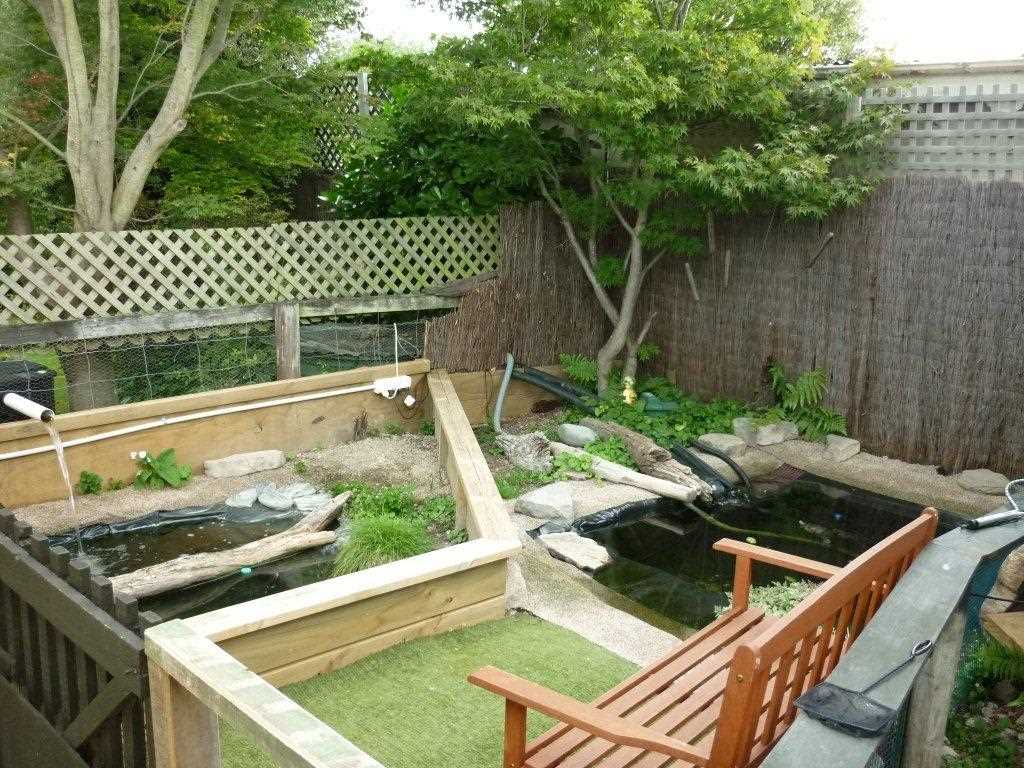
3. UVB Lighting
Red Eared Sliders require UVB lighting to help them metabolize calcium and maintain strong shells and overall health. Place a UVB light above the basking area in the tank, ensuring that it covers the entire area and is on for 10-12 hours a day. Make sure to replace the UVB bulb every 6-12 months, as its effectiveness decreases over time.
4. Heating
Maintaining a proper water temperature is essential for your Red Eared Slider’s overall health. Use a reliable water heater to keep the water temperature between 75-85°F (24-29°C). Combine the water heater with a thermostat to ensure the temperature remains constant.
5. Plants and Decorations
Add some live or artificial aquatic plants to the tank to provide a more natural environment for your Red Eared Slider. These plants not only enhance the aesthetics of the tank but also provide hiding spots and resting areas for your turtle. Ensure that any decorations or plants you choose are safe for your turtle and won’t harm them if ingested.
6. Water Depth
Red Eared Sliders need both deep and shallow water areas in their outdoor habitat. Provide a deep area that allows them to fully submerge and swim, as well as a shallower area with a smooth ramp for easy access to the basking area. The basking area should be large enough for your turtle to comfortably rest and dry off.
Following these steps when setting up the tank for your Red Eared Slider’s outdoor habitat will create an ideal environment for your turtle to thrive and lead a happy and healthy life.
Selecting the Right Substrate for Your Red-Eared Slider’s Outdoor Habitat
Types of Substrate
There are several options to consider when selecting the substrate for your red-eared slider’s outdoor habitat. Here are some popular choices:
| Substrate Type | Description | Benefits |
|---|---|---|
| Aquarium Gravel | Small, smooth rocks or gravel | Easy to clean, provides a natural look |
| Sand | Finely ground particles | Allows natural digging behavior, good heat conductor |
| Cypress Mulch | Shredded cypress bark | Retains humidity, provides hiding spots |
| Coconut Coir | Ground coconut husks | Retains moisture, sustainable option |
Considerations for Substrate Selection
When selecting the substrate for your red-eared slider’s outdoor habitat, there are a few important factors to consider:
1. Safety: Ensure that the substrate does not pose any health risks to your turtle. Avoid sharp materials or substrates that can be ingested and cause intestinal blockage.
2. Ease of Cleaning: Choose a substrate that is easy to clean and maintain. Regular spot cleaning and substrate replacement will be necessary to keep the habitat hygienic and odor-free.
3. Natural Behavior: Consider your turtle’s natural behavior and preferences when choosing the substrate. Some turtles enjoy digging, while others prefer a more solid surface or hiding spots.
4. Heat Retention: Certain substrates, such as sand, have better heat retention properties, which can help provide a warmer basking area for your red-eared slider.
Maintenance and Replacement
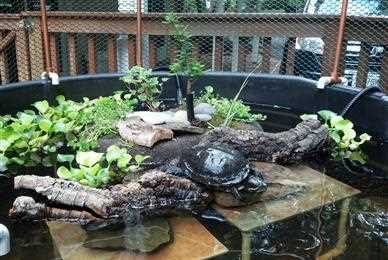
Regular maintenance of the substrate is essential for your red-eared slider’s health. Remove any waste or uneaten food from the substrate daily to prevent bacterial growth. Depending on the type of substrate, periodic replacement may be necessary to maintain its cleanliness and integrity.
By selecting the right substrate for your red-eared slider’s outdoor habitat, you can create an environment that promotes their natural behaviors, ensures their comfort, and contributes to their overall well-being. Remember to regularly monitor the substrate condition and make adjustments as needed to provide the best habitat for your beloved turtle.
Providing Adequate Lighting for Your Red Eared Slider’s Outdoor Habitat
| Type of Lighting | Duration | Location |
|---|---|---|
| UVB Lighting | 10-12 hours per day | Directly above the basking area |
| UVA Lighting | 10-12 hours per day | Throughout the tank |
UVB lighting is essential for your red-eared slider’s health as it helps them produce vitamin D3, which is necessary for calcium absorption. Without UVB lighting, your turtle is at risk of developing metabolic bone disease. UVA lighting, on the other hand, helps simulate natural sunlight and provides a more natural environment for your turtle.
It’s recommended to place the UVB lighting directly above the basking area where your red-eared slider spends most of its time. This will ensure that your turtle is getting enough UVB exposure while basking. UVA lighting should be evenly distributed throughout the tank to provide a consistent light source.
By providing adequate lighting in your red-eared slider’s outdoor habitat, you can help promote its overall well-being and create a more natural and comfortable environment for your pet.
Maintaining Proper Water Temperature for Your Outdoor Red Eared Slider Habitat
Creating the perfect outdoor habitat for your red eared slider involves ensuring that the water temperature is maintained at an ideal level. Red eared sliders are cold-blooded reptiles, which means they rely on external sources of heat to regulate their body temperature. The water temperature in their habitat plays a crucial role in their overall health and well-being.
Why is water temperature important?
Red eared sliders are native to warmer regions and require specific water temperatures to thrive. The ideal water temperature for these turtles ranges between 75 and 85 degrees Fahrenheit (24 to 29 degrees Celsius). Maintaining this temperature range is essential as it directly affects their metabolism, digestion, and immune system.
How to regulate water temperature?
There are several methods to regulate the water temperature in your red eared slider’s outdoor habitat:
1. Sunlight: Positioning the tank or enclosure in an area that receives ample sunlight can help warm the water naturally. However, make sure to provide shade as well to prevent overheating.
2. Heater: Using a submersible aquarium heater is a reliable way to maintain a consistent water temperature. Choose a heater with a thermostat and set it to the appropriate temperature range for your red eared slider.
3. Heat lamp: If your outdoor habitat lacks direct sunlight, you can use a heat lamp to provide warmth. Place the heat lamp above the basking area to simulate the sun’s rays and create a warm spot for your turtle.
Monitoring the water temperature
It’s crucial to regularly monitor the water temperature to ensure it remains within the recommended range. You can use a digital aquarium thermometer or a reptile-specific thermometer to accurately measure the water temperature. Adjust the heater or heat lamp accordingly to maintain a stable and suitable environment for your red eared slider.
Remember, sudden temperature fluctuations can be stressful for your turtle and may negatively impact their health. Aim for a gradual change in temperature if adjustments are needed.
By maintaining the proper water temperature in your red eared slider’s outdoor habitat, you can provide them with a comfortable and thriving environment. Regular temperature checks and appropriate heating methods will contribute to the overall well-being of your slider and ensure they lead a healthy and happy life.
Ensuring Clean and Clear Water in Your Outdoor Red Eared Slider Habitat
One crucial aspect of maintaining a healthy outdoor habitat for your red eared slider is ensuring clean and clear water. Clean water is essential for the overall well-being and health of your turtle. Here are some tips to help you keep the water in your turtle’s habitat clean:
1. Filter and Circulation
Investing in a high-quality filtration system is crucial for maintaining clean water in your red eared slider’s outdoor habitat. A good filter will help remove debris, waste, and other impurities from the water. Make sure to choose a filter suitable for the size of your turtle’s tank and install it properly to ensure proper water circulation.
2. Regular Water Changes
Performing regular water changes is another important step in maintaining clean water for your red eared slider. Partial water changes should be done weekly or as needed, depending on the size of the tank and the number of turtles. During water changes, siphon out any debris or waste accumulated at the bottom of the tank to keep the water clean.
3. Remove Uneaten Food
Uneaten food left in the tank can quickly decompose and pollute the water. To prevent this, remove any uneaten food within a few hours after feeding your red eared slider. This will help maintain water quality and prevent the growth of harmful bacteria.
4. Monitoring Water Parameters
Regularly test the water parameters in your red eared slider’s outdoor habitat. Use a reliable water test kit to check for levels of ammonia, nitrites, nitrates, and pH. Monitoring these parameters will allow you to take necessary actions if any levels are out of balance and ensure a clean and safe environment for your turtle.
5. Regular Tank Maintenance
Perform routine tank maintenance to keep the habitat clean and prevent the accumulation of waste and debris. This includes regular cleaning of tank walls and decorations using an aquarium-safe cleaning solution.
| Water Quality | Recommended Parameters |
|---|---|
| Ammonia | 0 ppm |
| Nitrites | 0 ppm |
| Nitrates | 20–40 ppm |
| pH | 6.8–7.8 |
By following these tips and maintaining clean and clear water, you will create a healthy and thriving outdoor habitat for your red eared slider. Remember to regularly monitor the water quality, perform necessary maintenance, and provide a clean environment for the overall well-being of your turtle.
Creating a Basking Area for Your Outdoor Red-Eared Slider Habitat
Next, ensure that the basking area is spacious enough to accommodate your turtle comfortably. It should be large enough for your turtle to stretch out and move around without feeling cramped. Providing ample space allows for more natural basking behavior and helps prevent stress and territorial disputes if you have multiple turtles sharing the habitat.
It’s crucial to place the basking area in a sunny spot within the habitat. Red-eared sliders require warmth to regulate their body temperature and digestion. Ensure that the area receives a good amount of direct sunlight, especially during the day. A lack of adequate sunlight can lead to health issues for your turtle, such as metabolic bone disease.
Lastly, monitor the temperature of the basking area regularly. Ideally, the basking spot should maintain a temperature of around 85-90 degrees Fahrenheit (29-32 degrees Celsius). Investing in a reptile-specific thermometer will help you accurately monitor the temperature and make any necessary adjustments.
| Tips for Creating a Basking Area: |
|---|
| 1. Ensure easy accessibility for your turtle to climb onto the basking area. |
| 2. Provide ample space for your turtle to stretch out and move around comfortably. |
| 3. Use natural materials like rocks or driftwood that retain heat well. |
| 4. Place the basking area in a sunny spot within the habitat to ensure adequate sunlight. |
| 5. Monitor the temperature of the basking area regularly with a reptile-specific thermometer. |
By creating a suitable basking area, you are providing your red-eared slider with a vital component of their outdoor habitat. This will allow them to bask, soak up the sun, and thrive in their natural behavior. Remember to regularly clean and maintain the basking area to ensure the overall health and happiness of your turtle.
Offering Hiding and Resting Spots for Red Eared Slider Habitat
Creating a habitat that provides hiding and resting spots is essential for the overall well-being of your red eared slider. These spots serve multiple purposes, including reducing stress, promoting natural behaviors, and offering a sense of security.
Adequate Hiding Spots
Having multiple hiding spots is recommended, as this allows your red eared slider to choose the spot that suits its mood or preferences. When creating hiding spots, make sure they are stable and do not have any sharp edges that could harm your turtle.
Resting Areas
Ensure that the resting areas are sturdy and capable of supporting the weight of your turtle. It’s also important to provide a variety of resting areas at different heights and depths to cater to your red eared slider’s preferences.
Tip: Placing resting areas closer to the water surface will allow your turtle to easily access them and bask under the heat lamps.
By offering adequate hiding and resting spots in the habitat, you are creating an environment that closely resembles the red eared slider’s natural habitat. This will help reduce stress, encourage natural behaviors, and promote overall well-being.
Providing a Balanced Diet for Your Red Eared Slider in their Outdoor Habitat
In terms of animal protein, red eared sliders enjoy a variety of options. You can feed them small fish like feeder fish or guppies. Crickets, earthworms, and mealworms can also be included in their diet. These sources of protein are essential for their growth and development.
In addition to providing a variety of fruits, vegetables, and protein, it is also important to offer a calcium source. This can be done through the use of a calcium supplement or by dusting their food with calcium powder. Calcium is crucial for their shell development and overall health.
By providing a balanced diet consisting of a variety of plant matter, animal protein, and calcium, you can ensure that your red eared slider thrives in their outdoor habitat.
Feeding Frequency and Portion Sizes for Red Eared Slider Habitat
Feeding Frequency
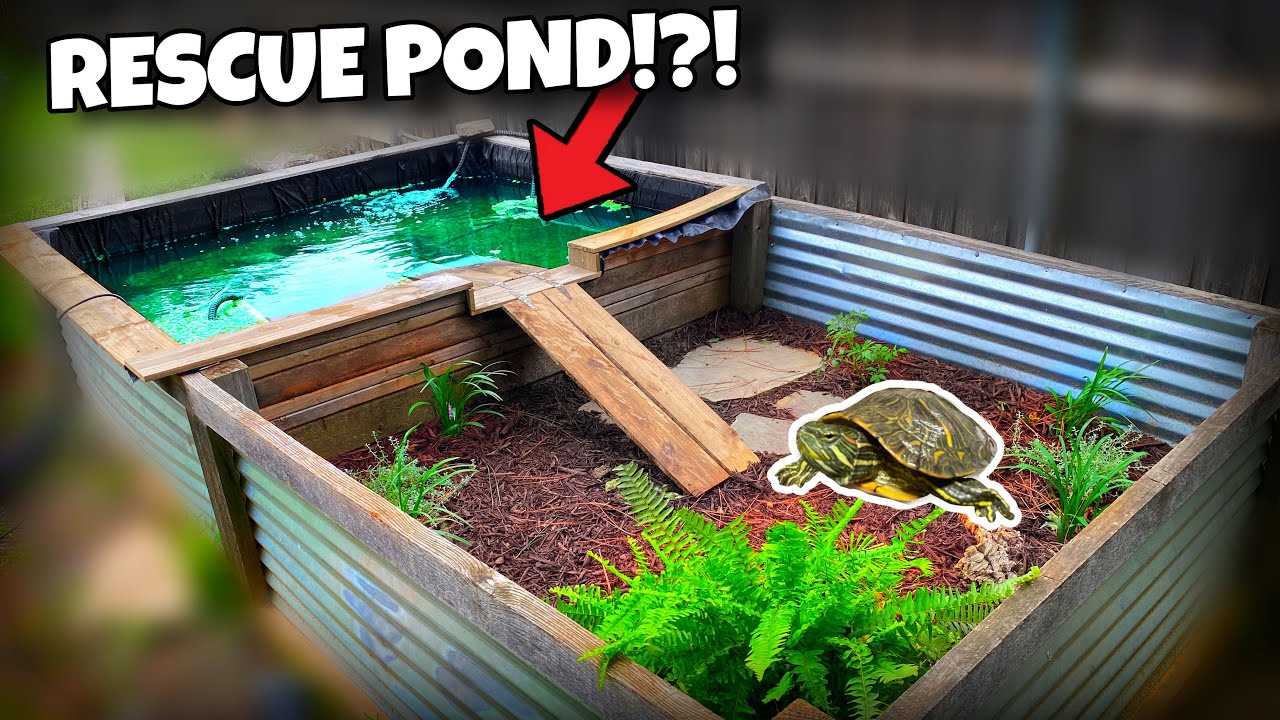
When determining the feeding frequency, observe your turtle’s behavior and appetite. If it eagerly consumes all the food you offer and seems active and healthy, then the feeding frequency is appropriate. However, if your turtle starts to become lethargic or refuses to eat, you may need to adjust the feeding frequency accordingly.
Portion Sizes
The portion sizes for your red eared slider will depend on its size and age. As a general guideline, feed your turtle an amount of food that it can consume within 15-20 minutes. This will prevent the uneaten food from dirtying the water and affecting the overall water quality in the habitat.
For young turtles, the portion sizes should be small and easily consumed. Offer them a variety of protein-rich foods such as bloodworms, insects, or commercial turtle pellets. Additionally, include plant matter like dark leafy greens, vegetables, and fruits in their diet.
As your turtle grows, adjust the portion sizes accordingly. Adult turtles require larger portions to meet their nutritional needs. Offer a variety of protein sources such as fish, shrimp, and lean meats, along with a diverse range of vegetables and fruits.
| Turtle Size | Feeding Frequency | Portion Sizes |
|---|---|---|
| Juvenile | Once or twice a day | Small amount within 15-20 minutes |
| Adult | Every other day | Larger amount within 15-20 minutes |
Remember to vary your turtle’s diet to provide a balanced nutritional intake. Consult a veterinarian specialized in reptiles for specific feeding recommendations based on your red eared slider’s age, size, and individual needs.
Off to the Vet: Health Check-ups
During these health check-ups, the vet will conduct a thorough examination of your slider, including checking for any signs of illness or injury. They will also assess the overall condition of the habitat and provide recommendations for improvement if necessary.
It is recommended to schedule regular check-ups at least once a year, or more frequently if you notice any changes in behavior, appetite, or physical appearance. These check-ups will help in early detection and prevention of any potential health issues.
During the visit, the veterinarian may also perform various diagnostic tests, such as blood work or fecal analysis, to further evaluate the health of your slider. These tests can help identify any underlying health conditions or infections that may not be apparent through physical examination alone.
| Key Points: |
|---|
| – Schedule regular check-ups with a reptile veterinarian |
| – Observe your slider’s behavior and appearance daily |
| – Monitor eating habits and activity level |
| – Report any changes in behavior or physical appearance to the veterinarian |
| – Follow recommended preventive measures to maintain a healthy habitat |
Avoiding Potential Hazards
When creating the perfect habitat for your red-eared slider, it is crucial to be aware of potential hazards that could pose a threat to their health and safety. By taking precautions and eliminating these risks, you can ensure a safe and secure environment for your pet.
1. Avoid Toxic Substances
Keep your red-eared slider away from any toxic substances that could harm them. This includes chemicals such as pesticides, fertilizers, cleaning products, and certain plants. Make sure to thoroughly research the plants in your turtle’s habitat to ensure they are safe to be around.
2. Secure the Habitat
Red-eared sliders are excellent climbers and can often find a way to escape their enclosure if it is not properly secured. Make sure to have a tight-fitting lid or cover for their tank to prevent any escapes. Additionally, ensure that any equipment, such as filters or heaters, are securely installed to prevent them from falling into the tank and causing harm.
3. Avoid Sharp Decorations
When choosing decorations for your turtle’s habitat, make sure to avoid any sharp or pointy objects that could potentially cause injury. This includes rocks, shells, or decorations with sharp edges.
4. Provide a Safe Water Source
Ensure that the water source for your red-eared slider is safe and clean. Tap water may contain chlorine and other harmful chemicals, so it is recommended to use a water conditioner to remove these substances. Additionally, make sure to regularly clean and change the water to prevent the buildup of harmful bacteria.
By being aware of these potential hazards and taking the necessary steps to eliminate them, you can provide a safe and secure habitat for your red-eared slider, promoting their overall health and well-being.
Enhancing the Outdoor Habitat for Your Red-Eared Slider
Creating a visually appealing and stimulating outdoor habitat for your red-eared slider is crucial to ensuring their overall well-being and happiness. Adding decorations to their environment can provide them with opportunities for exploration, mental stimulation, and physical exercise.
One key element to consider when enhancing the habitat is creating a land area for your red-eared slider. This can be achieved by adding large rocks or logs that provide a dry area for basking and resting. Make sure to secure these items in place to prevent them from shifting or falling over.
Adding live plants to the habitat can create a more natural and aesthetically pleasing environment for your turtle. Aquatic plants such as water lilies or duckweed can be planted in the water area of the habitat, while non-toxic terrestrial plants such as hibiscus or spider plants can be placed in the land area. These plants not only provide visual interest but also offer additional hiding spots and shade for your red-eared slider.
Another option for enhancing the habitat is the addition of natural substrates. Sand, soil, or crushed walnut shells can be used to create a more realistic and comfortable environment for your turtle. However, make sure to regularly clean and replace these substrates to prevent the accumulation of waste and bacteria.
Enrichment items such as floating platforms or ramps can also be added to the habitat to provide your turtle with opportunities for climbing and exploring. These items can be made from materials such as cork bark or PVC pipe, ensuring they are sturdy and safe for your red-eared slider.
Lastly, consider adding a water feature to the habitat, such as a small waterfall or a shallow pond, to simulate a more natural environment for your red-eared slider. This not only provides them with a source of fresh water but also adds visual interest and promotes their natural behaviors.

I’m Lena Adams—a product of an unconventional upbringing in the African wilderness. My father, a daring explorer of African wildlife, sparked my fascination with reptiles, a passion that intertwined with the tragic loss of my mother during an expedition, leaving an indelible mark on my life. Driven to understand the creatures that captivated my parents, I embarked on my journey, sharing insights about reptiles, frogs, and lizards on my website. Through my explorations and conservation efforts, I honour my family’s legacy while seeking connections—to the creatures, nature, and the mother whose presence I yearn to understand.
